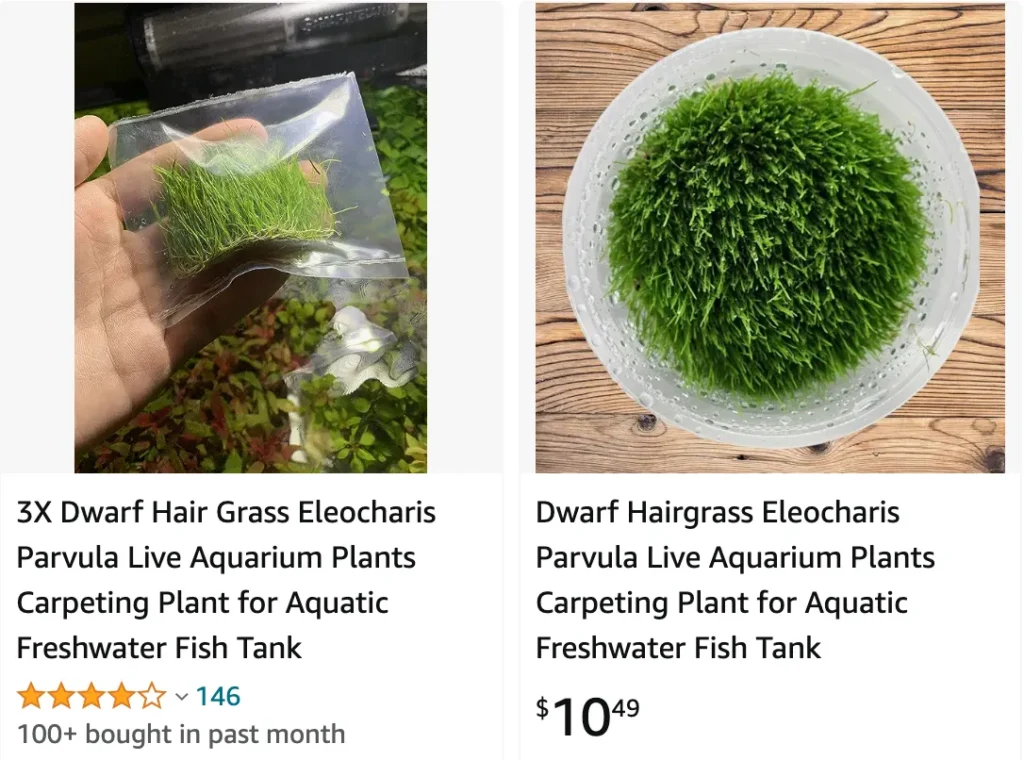
Eleocharis Parvula: The Little Hairgrass with Big Impact
For any aquascapist, the foreground plays a crucial role in setting the scene. It can be a lush carpet of green, a contrasting bed of rocks, or a carefully placed scattering of interesting plants. And for those seeking a low-maintenance, beautiful foreground plant, Eleocharis Parvula, also known as Dwarf Hairgrass, is a fantastic choice.
This tiny wonder has stolen a place in my heart (and aquascapes) for its ease of care, vibrant green color, and ability to create a dense, carpet-like effect. But before you rush out and grab some for your own tank, let’s delve deeper into the world of Eleocharis Parvula.
307 Species in Genus Eleocharis
What is Eleocharis Parvula?
Eleocharis Parvula is a species of spikerush, but in the aquarium hobby, it’s more commonly known as Dwarf Hairgrass. This tiny plant is native to brackish and saltwater habitats like marshes and mudflats. However, it thrives in freshwater aquariums as well, making it a versatile choice for aquascapers.
Dwarf Hairgrass grows in dense clumps of thin, needle-like blades that rarely exceed 2 inches in height. Its vibrant green color adds a touch of life to the foreground and provides a beautiful contrast to other plants or hardscape elements.
Eleocharis Parvula vs Acicularis
Between Eleocharis Parvula and Eleocharis Acicularis, I’ve found Parvula to be more manageable in my aquascapes, as Acicularis tends to grow taller and requires more frequent trimming to maintain a neat look.
Eleocharis Parvula vs Belem
When comparing Eleocharis Parvula to Belem, Parvula has always given me a denser, more carpet-like effect, while Belem, though beautiful, tends to be slightly more finicky about light and CO2 levels in my tanks.
Eleocharis Parvula vs Eleocharis Sp Mini
Eleocharis Parvula and Eleocharis Sp Mini have both thrived in my aquariums, but Sp Mini has a finer, more delicate appearance that I appreciate in smaller setups where I want a subtle, grassy feel.
Eleocharis Parvula vs Pusilla
Eleocharis Parvula and Pusilla have been staples in my aquascaping projects, yet Parvula consistently forms a thicker, more uniform carpet, whereas Pusilla sometimes grows more sparsely and unevenly in my experience.
How to plant Eleocharis Parvula?
One of the things I love most about Eleocharis Parvula is how easy it is to plant. Unlike some delicate foreground plants, Dwarf Hairgrass is quite forgiving.
Here’s how I approach planting it:
- Separate the clumps: Most Eleocharis Parvula comes in small bunches. Gently separate the bunch into individual stems or small clusters of 3-4 stems.
- Prepare the substrate: Dwarf Hairgrass prefers a fine-grained substrate like sand or a sand/soil mix. Ensure the substrate is at least 2 inches deep to allow for root growth.
- Planting: Using tweezers, carefully plant each stem or cluster individually into the substrate. Push them down gently, ensuring the base of the plant is secure.
- Spacing: For a dense carpet effect, plant the Eleocharis Parvula close together, with around half an inch spacing between each stem or cluster.
Does Eleocharis Parvula Spread on its Own?
Yes, Eleocharis Parvula is a spreading plant! It achieves this through a network of runners that grow horizontally beneath the substrate. These runners then send up new shoots at intervals, gradually filling in the foreground.
This spreading habit is what makes Dwarf Hairgrass so effective in creating a dense carpet. However, if left unchecked, it can also encroach on other plants.
Trimming Eleocharis Parvula for a Perfect Carpet
The good news is that Eleocharis Parvula is very easy to trim. As the plant grows, simply use a sharp pair of aquarium scissors to trim the top portion of the blades to your desired height. You can discard the trimmings or replant them in another area to fill in gaps.
Trimming not only maintains the desired aesthetic but also encourages the plant to send out new shoots, further densifying the carpet.
Is Eleocharis Parvula difficult to plant?
Not at all! As mentioned earlier, planting Eleocharis Parvula is a simple process. With just a bit of preparation and some basic tools like tweezers and scissors, you can easily create a stunning foreground in your aquarium.
Can Eleocharis Parvula be tissue cultured?
Absolutely! In fact, many aquatics stores sell Eleocharis Parvula in tissue culture cups. These plants are grown in a sterile lab environment, free of pests and algae. This makes them a great choice for those who want to avoid introducing unwanted hitchhikers into their aquariums.
Tissue-cultured Eleocharis Parvula typically comes in small, dense mats that can be easily broken up and planted individually.
Choosing the Right Tank Mates for Eleocharis Parvula
Eleocharis Parvula is a peaceful plant and gets along well with most other aquarium inhabitants. However, some things to consider:
- Bottom feeders: While Dwarf Hairgrass provides excellent hiding places for fry and shrimplets, be aware that bottom feeders like catfish might uproot the plants while foraging.
- Fast-growing plants: Eleocharis Parvula thrives under moderate to high lighting. However, avoid placing it next to very fast-growing plants that can outcompete it for light and nutrients.
Conclusion
Eleocharis Parvula is a fantastic choice for any aquascape. Its ease of care, vibrant color, and ability to create a stunning carpet make it a favorite among hobbyists. With a little TLC, you can cultivate a lush, green foreground that will transform your aquarium into a miniature underwater garden. Whether you’re a seasoned aquascaper or just starting out, Eleocharis Parvula is a versatile and rewarding plant that will add a touch of elegance and beauty to your underwater world. So, why not give it a try? You might just find yourself as enamored with this little wonder as I am.
If i die, water my plants!



